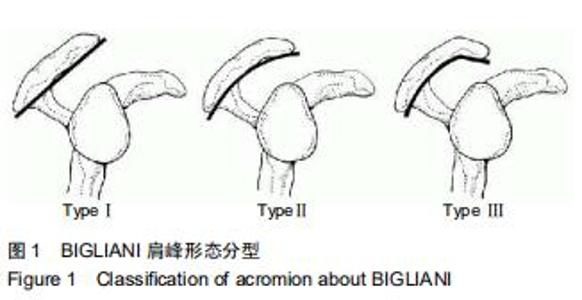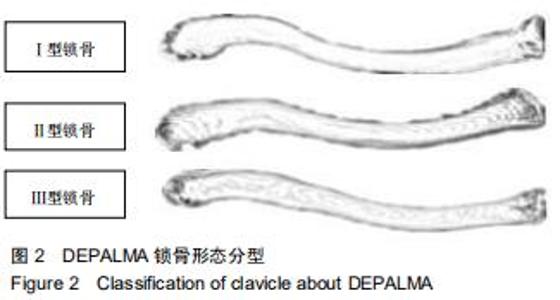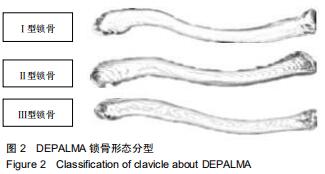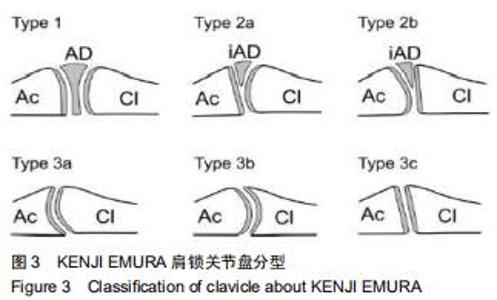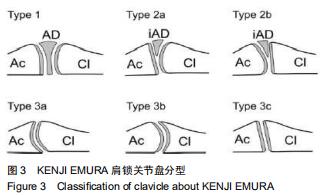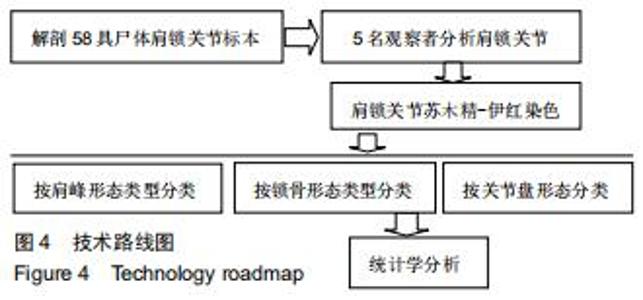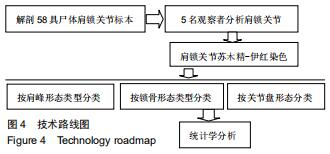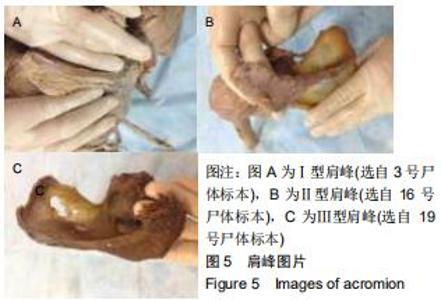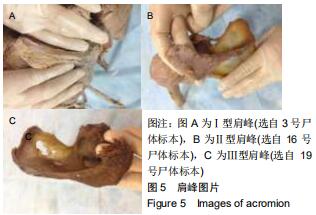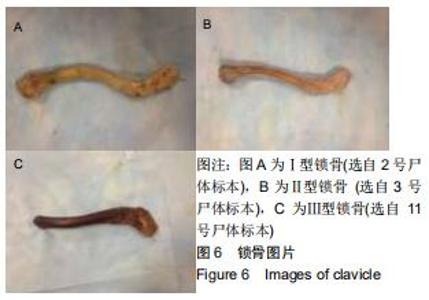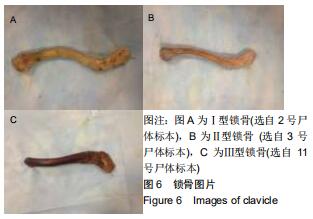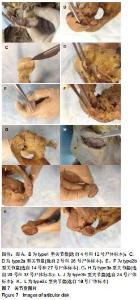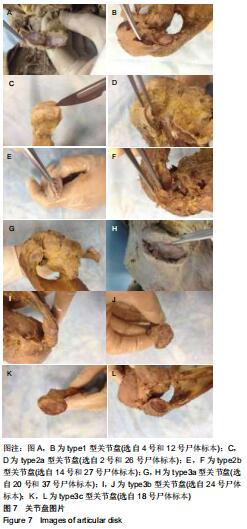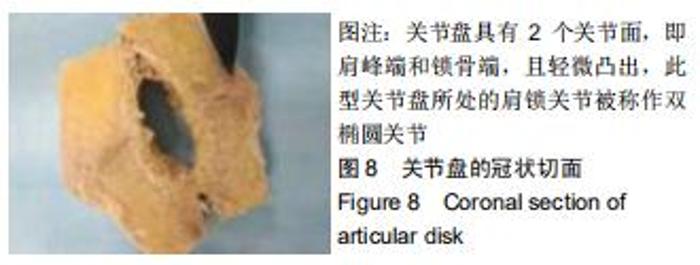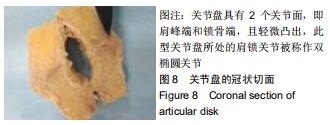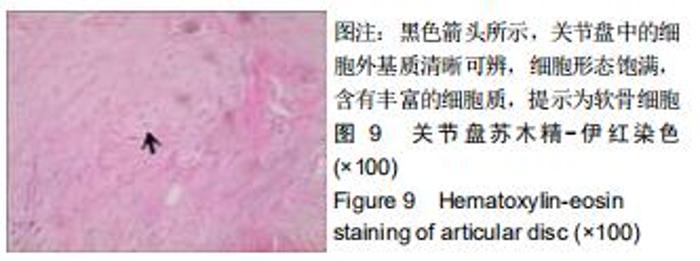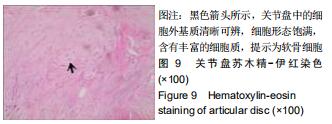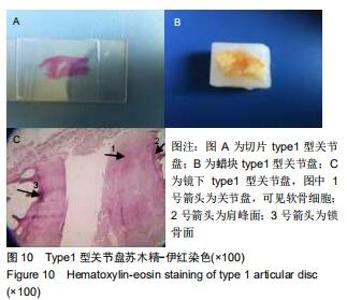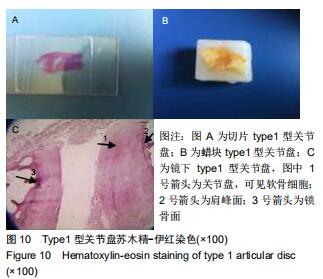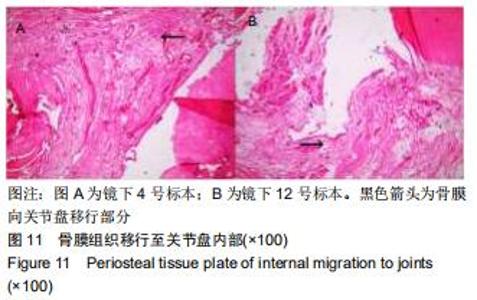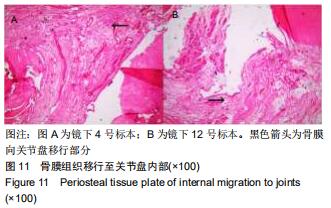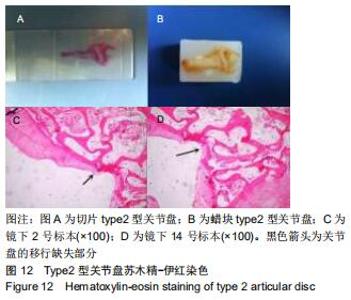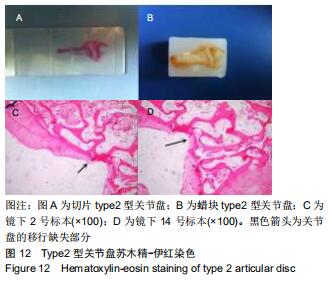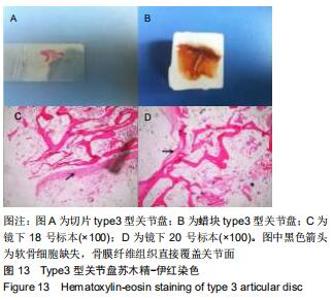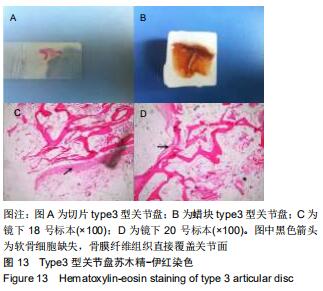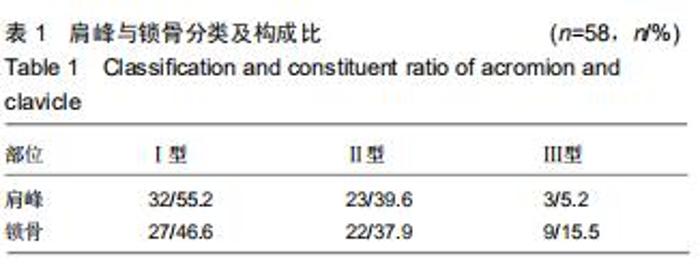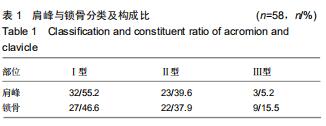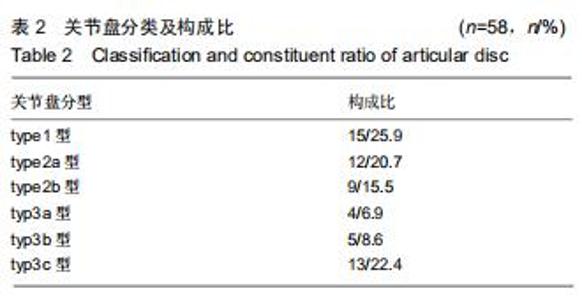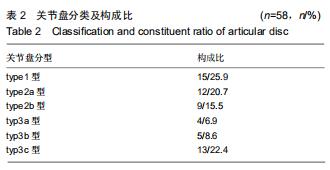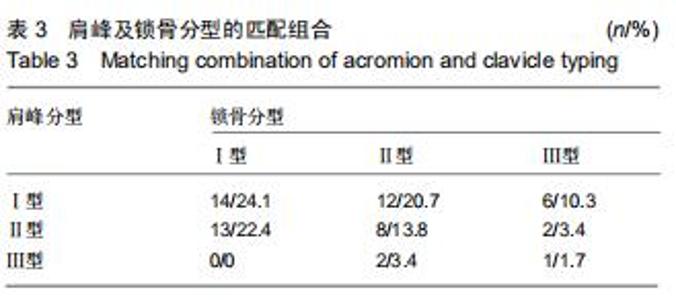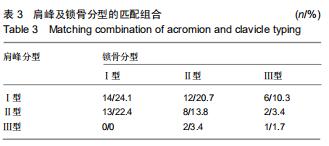Chinese Journal of Tissue Engineering Research ›› 2020, Vol. 24 ›› Issue (33): 5358-5365.doi: 10.3969/j.issn.2095-4344.2880
Previous Articles Next Articles
Anatomical characteristics of acromioclavicular joint and joint discs
Wang Zhizhou, Zhang Hailong, Chen Jian, Ye Zheng, Yang Yuanqing, Ying Zhengran
Shanghai Putuo District People’s Hospital, Shanghai 200060, China
-
Received:2019-12-19Revised:2019-12-25Accepted:2020-02-24Online:2020-11-28Published:2020-09-30 -
Contact:Ying Zhengran, Doctoral candidate, Attending physician, Shanghai Putuo District People’s Hospital, Shanghai 200060, China -
About author:Wang Zhizhou, Master, Physician, Shanghai Putuo District People’s Hospital, Shanghai 200060, China -
Supported by:the General Project of Shanghai Health Committee, No. 201740150
CLC Number:
Cite this article
Wang Zhizhou, Zhang Hailong, Chen Jian, Ye Zheng, Yang Yuanqing, Ying Zhengran. Anatomical characteristics of acromioclavicular joint and joint discs[J]. Chinese Journal of Tissue Engineering Research, 2020, 24(33): 5358-5365.
share this article
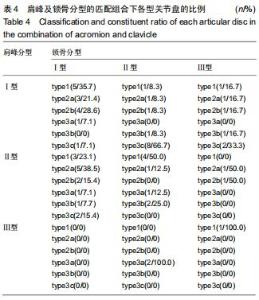
2.10 肩峰及锁骨分型进行排列组合后各型关节盘的构成比 以同一个肩关节肩峰和锁骨的型号进行匹配后各型关节盘所占的比例,共有54种匹配结果。其中Ⅰ型肩峰与Ⅰ型锁骨组合下type1型和type2b型关节盘所占比例最大,分别为35.7%和28.6%;Ⅰ型肩峰与Ⅱ型锁骨组合下type3c型关节盘所占比例最大,为66.7%;Ⅰ型肩峰与Ⅲ型锁骨组合下type3c型关节盘所占比例最大,为33.3%;Ⅱ型肩峰与Ⅰ型锁骨组合下type2a型和type1型关节盘所占比例最大,分别为38.5%和23.1%;Ⅱ型肩峰与Ⅱ型锁骨组合下type1型关节盘所占比例最大,为50.0%;Ⅱ型肩峰与Ⅲ型锁骨组合下type2a型和type2b型关节盘所占比例最大,为50.0%;Ⅲ型肩峰与Ⅰ型锁骨组合下无关节盘匹配;Ⅲ型肩峰与Ⅱ型锁骨组合下type3a型关节盘所占比例最大,为100.0%;Ⅲ型肩峰与Ⅲ型锁骨组合下type1型关节盘所占比例最大,为100.0%。肩峰及锁骨分型进行排列组合后各型关节盘所占的比例见表4。 "
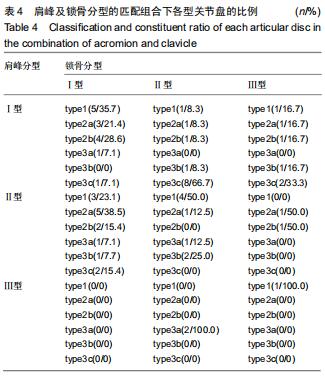
|
[1] HYLAND S, VARACALLO M. Anatomy, shoulder and upper limb, clavicle. StatPearls. Treasure Island (FL): StatPearls Publishing, 2020.
[2] LI X, MA R, BEDI A, et al. Management of acromioclavicular joint injuries. J Bone Joint Surg Am. 2014;96(1):73-84.
[3] SACCOMANNO MF, DE IESO C, MILANO G. Acromioclavicular joint instability: anatomy, biomechanics and evaluation. Joints.2014;2(2):87-92.
[4] WILLIMON SC, GASKILL TR, MILLELT PJ. Acromioclavicular joint injuries: anatomy, diagnosis, and treatment. Phys Sportsmed. 2011;39:116-122.
[5] 刘松,秦士吉,张英泽.肩锁关节脱位的手术治疗进展[J].中华创伤骨科杂志,2013,15(4):349-351.
[6] 王治洲,伊力哈木•托合提.肩锁关节的脱位及修复重建[J].中国组织工程研究,2014,18(33):5377-5383.
[7] PREEEMTLI M, GARIMFIA E, MADOMA L, et al. Antomy of the shoulder:pictorial essay. J Ultrasound. 2010;13(4): 179-187.
[8] ENFREE KJ, RILEY MK, WHEELER D, et al. Ligamentous anatomy of the distal clavicle. J Shoulder Elbow Surg. 2003; 12(3):355-359. [9] MAIER D, JAEGER M, REISING K, et al. Injury patterns of the acromioclavicular ligament complex in acute acromioclavicular joint dislocations: a cross-sectional, fundamental study. BMC Musculoskelet Disord. 2016;17:385
[10] 汤文辉.肩锁关节脱位III型术中关节盘处理[J].广州医药,2004, 35(6):43-44.
[11] NEER CS 2ND. Anterior acromioplasty for the chromic impingement syndrome in the shoulder. a preliminary report. J Bone Joint Surg.1972;54(5):41-50.
[12] BIGLIANI LU, MORRISON DS. The Morphology of the Acromion and its relationship to rotator cuff tears. Orthop Trans. 1986;10:216-228.
[13] DEPALMA AF. Degenerative changes in the sternoclavicular joints in various decades springfield. Springfield, IL, 1957: 116.
[14] EMURA K, ARAKAWA T, MIKI A, et al. Anatomical observations of the human acromioclavicular joint. Clin Anat. 2014;27(7): 1046-1052.
[15] MAYERHOEFFR ME, BREITENSEHER MJ, ROPOSCH A, et al. Comparison of MRI and conventional radiography for assessment of acromial shape. AJR Am J Roentgenol.2005; 184(2):671-675.
[16] 薛建刚,孙海飚,韩晓强,等.肩峰撞击征诊断与治疗的研究进展[J]. 中国骨与关节杂志,2019,8(8):617-621.
[17] SALTER EG JR, NASCA RJ, SHELLEY BS. Anatomical observations on the acromioclavicular joint and supporting ligaments. Am J Sports Med. 1987;15(3):199-206.
[18] NAKAZAWA M, NIMURA A, MOCHIZUKI T, et al. The orientation and variation of the acromioclavicular ligament: an anatomic study. Am J Sports Med. 2016;44(10):2690-2695.
[19] 宋鑫,买合木提·亚库甫,伊力哈木·托合提,等.肩锁关节B超分型在肩锁关节脱位手术方式选择中的重要意义[J].新疆医学, 2016,46(9):1077-1082.
[20] 张小权,杨选民,卢卫疆,等.肩锁关节损伤的影像诊断[J].现代医用影像学,2014,23(6):654-657.
[21] HEERS G, GOTZ J, SEHUBEN T, et al. MR imaging of the intraarticular disk of the acromioclavicular joint: a comparison with anatomical,histological and invivo findings. Skeletal Radiol. 2007;36(1):23-28.
[22] RENGIER F, MEHNDIRATTA A, VON TENGG-KOBLIGK H, et al. 3D printing based on imaging data: review of medical applications. Int J Comput Assist Radiol Surg. 2010;5(4): 335-341.
[23] MICHALSKI MH, ROSS JS. The shape of things to come: 3D printing in medicine. JAMA. 2014;312(21):2213-2214.
[24] ESSES SJ, BERMAN P, BLOOM AI, et al. Clinical applications of physical 3D models derived from MDCT data and created by rapid prototyping. AJR Am J Roentgenol. 2011; 196(6):W683-W688. [25] 李鉴轶,游辅宇,孔祥雪,等.一种新型喙锁韧带重建导向器及其钻孔精度评价[J].中国骨科临床与基础研究杂志, 2015,7(5): 285-289. |
| [1] | Xu Feng, Kang Hui, Wei Tanjun, Xi Jintao. Biomechanical analysis of different fixation methods of pedicle screws for thoracolumbar fracture [J]. Chinese Journal of Tissue Engineering Research, 2021, 25(9): 1313-1317. |
| [2] | Jiang Yong, Luo Yi, Ding Yongli, Zhou Yong, Min Li, Tang Fan, Zhang Wenli, Duan Hong, Tu Chongqi. Von Mises stress on the influence of pelvic stability by precise sacral resection and clinical validation [J]. Chinese Journal of Tissue Engineering Research, 2021, 25(9): 1318-1323. |
| [3] | Zhang Tongtong, Wang Zhonghua, Wen Jie, Song Yuxin, Liu Lin. Application of three-dimensional printing model in surgical resection and reconstruction of cervical tumor [J]. Chinese Journal of Tissue Engineering Research, 2021, 25(9): 1335-1339. |
| [4] | Zhang Yu, Tian Shaoqi, Zeng Guobo, Hu Chuan. Risk factors for myocardial infarction following primary total joint arthroplasty [J]. Chinese Journal of Tissue Engineering Research, 2021, 25(9): 1340-1345. |
| [5] | Li Dadi, Zhu Liang, Zheng Li, Zhao Fengchao. Correlation of total knee arthroplasty efficacy with satisfaction and personality characteristics [J]. Chinese Journal of Tissue Engineering Research, 2021, 25(9): 1346-1350. |
| [6] | Wei Wei, Li Jian, Huang Linhai, Lan Mindong, Lu Xianwei, Huang Shaodong. Factors affecting fall fear in the first movement of elderly patients after total knee or hip arthroplasty [J]. Chinese Journal of Tissue Engineering Research, 2021, 25(9): 1351-1355. |
| [7] | Wang Jinjun, Deng Zengfa, Liu Kang, He Zhiyong, Yu Xinping, Liang Jianji, Li Chen, Guo Zhouyang. Hemostatic effect and safety of intravenous drip of tranexamic acid combined with topical application of cocktail containing tranexamic acid in total knee arthroplasty [J]. Chinese Journal of Tissue Engineering Research, 2021, 25(9): 1356-1361. |
| [8] | Xiao Guoqing, Liu Xuanze, Yan Yuhao, Zhong Xihong. Influencing factors of knee flexion limitation after total knee arthroplasty with posterior stabilized prostheses [J]. Chinese Journal of Tissue Engineering Research, 2021, 25(9): 1362-1367. |
| [9] | Peng Zhihao, Feng Zongquan, Zou Yonggen, Niu Guoqing, Wu Feng. Relationship of lower limb force line and the progression of lateral compartment arthritis after unicompartmental knee arthroplasty with mobile bearing [J]. Chinese Journal of Tissue Engineering Research, 2021, 25(9): 1368-1374. |
| [10] | Huang Zexiao, Yang Mei, Lin Shiwei, He Heyu. Correlation between the level of serum n-3 polyunsaturated fatty acids and quadriceps weakness in the early stage after total knee arthroplasty [J]. Chinese Journal of Tissue Engineering Research, 2021, 25(9): 1375-1380. |
| [11] | Zhang Chong, Liu Zhiang, Yao Shuaihui, Gao Junsheng, Jiang Yan, Zhang Lu. Safety and effectiveness of topical application of tranexamic acid to reduce drainage of elderly femoral neck fractures after total hip arthroplasty [J]. Chinese Journal of Tissue Engineering Research, 2021, 25(9): 1381-1386. |
| [12] | Wang Haiying, Lü Bing, Li Hui, Wang Shunyi. Posterior lumbar interbody fusion for degenerative lumbar spondylolisthesis: prediction of functional prognosis of patients based on spinopelvic parameters [J]. Chinese Journal of Tissue Engineering Research, 2021, 25(9): 1393-1397. |
| [13] | Lü Zhen, Bai Jinzhu. A prospective study on the application of staged lumbar motion chain rehabilitation based on McKenzie’s technique after lumbar percutaneous transforaminal endoscopic discectomy [J]. Chinese Journal of Tissue Engineering Research, 2021, 25(9): 1398-1403. |
| [14] | Chen Xinmin, Li Wenbiao, Xiong Kaikai, Xiong Xiaoyan, Zheng Liqin, Li Musheng, Zheng Yongze, Lin Ziling. Type A3.3 femoral intertrochanteric fracture with augmented proximal femoral nail anti-rotation in the elderly: finite element analysis of the optimal amount of bone cement [J]. Chinese Journal of Tissue Engineering Research, 2021, 25(9): 1404-1409. |
| [15] | Du Xiupeng, Yang Zhaohui. Effect of degree of initial deformity of impacted femoral neck fractures under 65 years of age on femoral neck shortening [J]. Chinese Journal of Tissue Engineering Research, 2021, 25(9): 1410-1416. |
| Viewed | ||||||
|
Full text |
|
|||||
|
Abstract |
|
|||||
